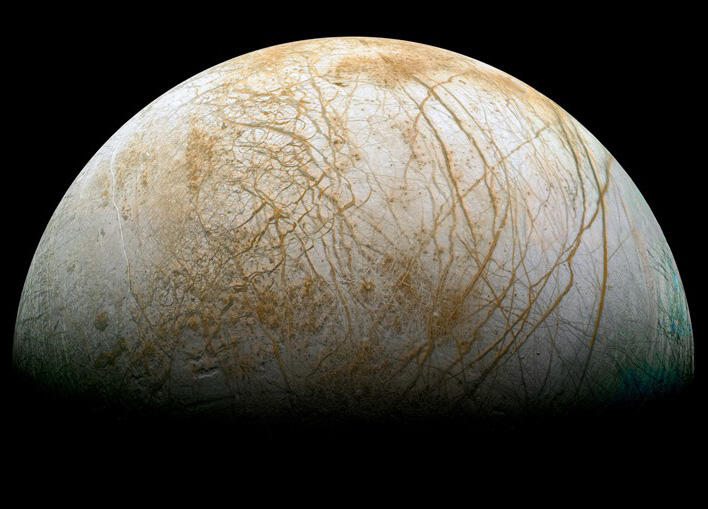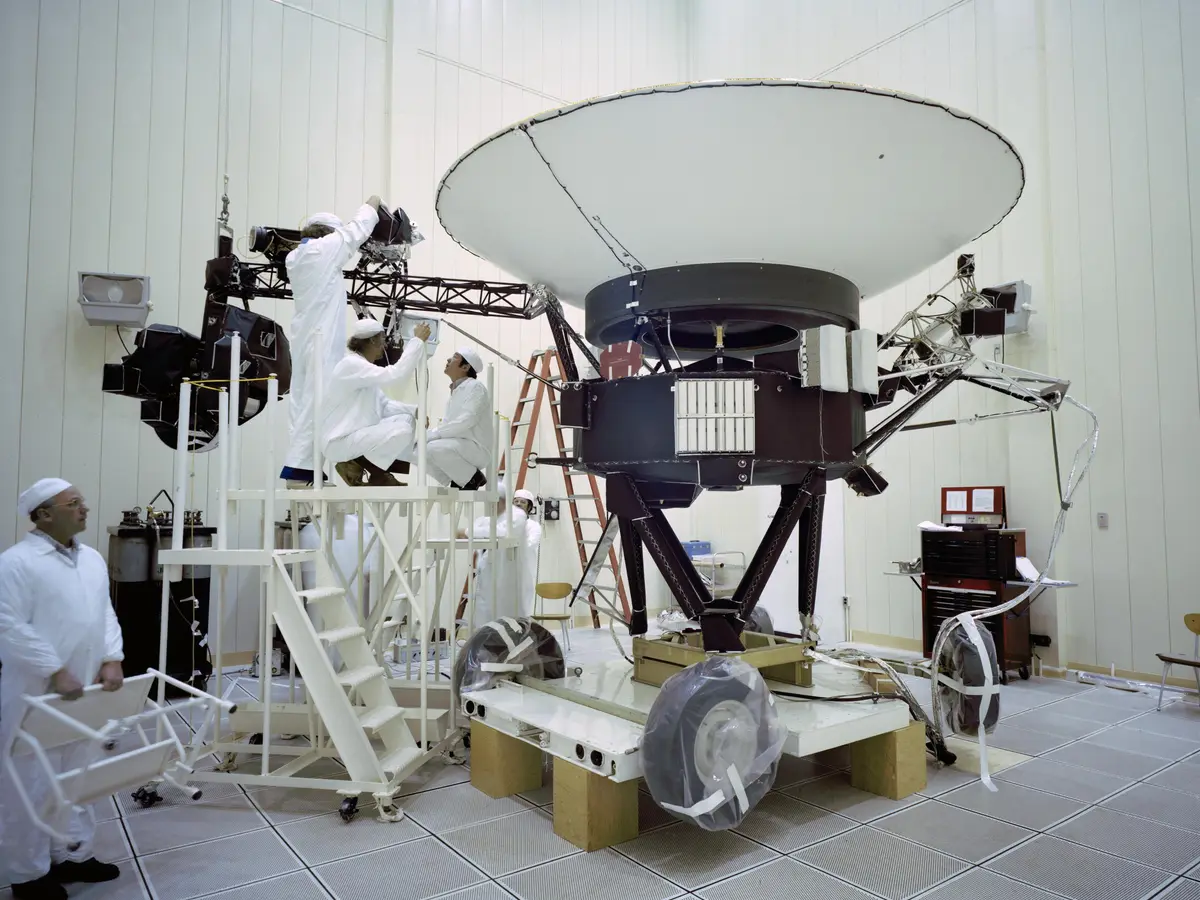Less than three days before the Weizmann Institute of Science was struck by Iranian missiles, several dozen members of the Israeli space community gathered there for the first public presentation of a particularly unique and ambitious Israeli space mission: a plan to search for signs of life on one of Jupiter’s major moons — and possibly even venture further to look for such signs on a moon of Saturn.
The mission, currently named Eureka, is still in its early conceptual and planning stages, seeking funding and international partners. Many hurdles remain before this dream can become reality. But the people who have quietly been developing the idea for more than two years — primarily at Israel Aerospace Industries and the Weizmann Institute of Science — are confident the project can be carried out on a relatively modest budget for a mission of this scale, led entirely by Israel, and reach the moons of Jupiter and Saturn as early as the next decade.
11 View gallery
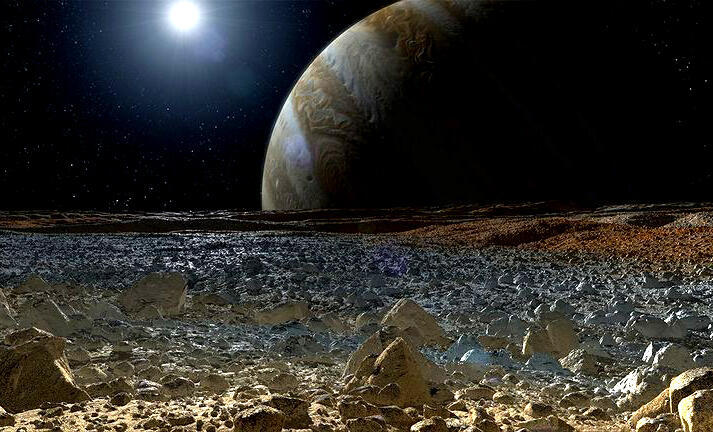

Are there signs of life beneath the ice? An artist’s rendition of Europa’s surface with Jupiter in the background
(Illustration: NASA/JPL-Caltech)
Europa, the smallest of Jupiter’s four large moons, currently represents one of the most intriguing bodies in the solar system and is the focus of extensive research. The reason: growing scientific evidence suggests that beneath its icy surface lies a subsurface ocean of liquid water. Liquid water is the environment in which life evolved on Earth, so in theory, there’s no reason why similar life—at least microbial life, reminiscent of our bacteria and algae—couldn’t exist in Europa’s waters as well.
It appears that similar subsurface oceans may also exist on other moons in the solar system. A particularly fascinating example is Enceladus, a moon of Saturn, where the Cassini spacecraft documented molecular hydrogen in its plume — jets of water vapor and ice particles erupting from fractures in its surface. Similar eruptions have also been detected on Europa, though they appear to be shorter-lived and more sporadic than those on Enceladus.
All observations suggesting the presence of water on Jupiter’s and Saturn’s moons are based on remote sensing. To actually reach this water—and determine whether it harbors life—would require landing on one of these moons with heavy and expensive instruments, collecting water directly from a plume, or drilling through an ice layer 20–30 kilometers thick. These are enormous technical challenges, requiring large, complex, and extremely costly space missions.
11 View gallery


An ice layer 20–30 kilometers thick, beneath which lies a subsurface ocean of liquid water—possibly harboring life
(Illustration: NASA)
Currently, two spacecraft are en route to Jupiter to study Europa without landing on it: the European Space Agency’s JUICE mission and NASA’s Europa Clipper mission. Both are scheduled to arrive in the Jovian system in the early 2030s. They are expected to pass close to Europa, observe and study its surface, and confirm the existence of its underground ocean. However, neither mission was designed to directly search for signs of life in the ocean or on the surface.
This is the gap the Israeli mission aims to fill. It will be based on a relatively low-cost, small spacecraft with a single core scientific objective: to remotely detect specific amino acids in the ice covering Europa’s surface—compounds that could indicate the presence of life in the ocean beneath.
“We can’t compete with the scale and budgets of the major space agencies, but a focused mission with a single instrument and a lot of trade-offs is something a small country can pull off,” said Prof. Yohai Kaspi from the Department of Earth and Planetary Sciences at the Weizmann Institute of Science, who is leading the project on behalf of the Institute. “In a way, we’re piggybacking on the big agencies. We’ll arrive after JUICE and Europa Clipper have already mapped the surface thoroughly. If we’re the first to follow them, we’ll have the best chance of succeeding.”
The idea for the mission originated with Andrey, an engineer at Israel Aerospace Industries, while attending the International Space University’s summer program three years ago. This annual event brings together professionals from a wide range of space-related fields for several weeks of lectures, workshops, and professional networking.
11 View gallery
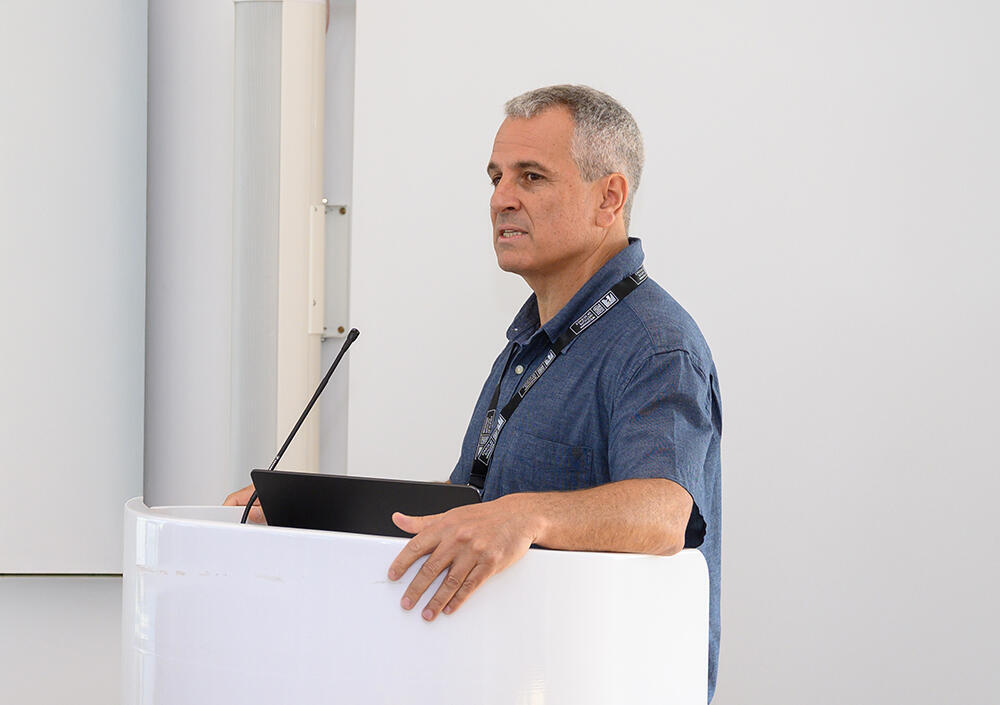

A mission of high risk and great scientific potential. Prof. Yohai Kaspi presenting the mission at the Weizmann Institute conference
(Photo: Ohad Herches, Weizmann Institute of Science)
“There were other mission ideas, some similar, both within our company and outside it. At the Space University, I spoke with people from NASA who expressed interest in a small mission to the moons of Jupiter and Saturn to search for signs of life — and I connected the dots,” Andrey told the Davidson Institute website.
Daniel, a colleague of Andrey at Israel Aerospace Industries, also joined the initiative. In addition to the company’s commercial projects, Daniel was involved in the Israeli spacecraft project Beresheet, launched to the Moon in 2019, which ultimately crashed during its landing attempt. Later, he and Andrey were both involved in the development of Beresheet 2, intended to land two landers on the Moon but recently suspended due to budgetary challenges faced by SpaceIL. Daniel is also involved in the development of the Israeli space telescope ULTRASAT, scheduled for launch in about two years.
“In 2023, we presented the idea for this mission at the company as a continuation of Beresheet 2, because it’s important to us to promote scientific and educational missions as well,” Daniel told the Davidson Institute website. “This is a mission with great potential to create a series of scientific missions that will inspire many people to love space and take an interest in it. Searching for life in space — much like landing on the Moon — is something that excites many people.”
Daniel and Andrey led an engineering team to begin assessing the feasibility of a mission to one of Jupiter’s moons. This included calculating possible trajectories, determining spacecraft size, fuel requirements, power consumption, communications methods with the spacecraft, and more. In parallel, they brought Prof. Yohai Kaspi into the project — a scientist with extensive experience in Jupiter missions. Among other roles, Kaspi is a member of the science team for NASA’s Juno mission, which has been orbiting Jupiter for nearly a decade, and he led the development of the Israeli scientific instrument aboard ESA’s JUICE mission.
The main challenge for the scientific team was to find a measurement method that could be performed remotely yet still provide a strong chance of yielding meaningful answers to the question: Are there signs of life on Europa’s surface? One of the key figures leading this effort is Dr. Gidi Yoffe, a postdoctoral researcher under the supervision of Prof. Kaspi. They ultimately concluded that the best targets are amino acids — the building blocks of proteins.
In a recently published paper, they focused on three aromatic amino acids – phenylalanine, tryptophan, and tyrosine — whose molecular structure includes a carbon ring. These amino acids are relatively complex and unlikely to form through non-biological processes. The researchers showed that these molecules can survive in ice for decades without breaking down, unlike other molecules that deteriorate under the intense radiation from Jupiter’s magnetic field or from ultraviolet radiation from the Sun. Moreover, they can be detected remotely even in extremely low concentrations.
These amino acids have a distinct advantage for detection from s distance: when exposed to ultraviolet light, they emit radiation at specific, known wavelengths. This property is the basis of Eureka’s scientific instrument, which will include a laser to illuminate Europa’s surface as the spacecraft passes at low altitude, and a telescope equipped with a UV-sensitive camera to detect the amino acids’ unique spectral signature.
“Our goal was to find a scientific question that this type of mission could realistically answer,” Yoffe told the Davidson Institute website. “There’s a gap the JUICE and Europa Clipper missions aren’t addressing, and we’ve shown that meaningful science is possible here. A lot more work is needed in refining the scientific questions, conducting astronomical observations to monitor surface changes on Europa, and proving in lab experiments that the core concept works. Many challenges remain — but our findings show the feasibility. At this point, this is the most reasonable method we have for detecting signs of life on Europa, at least until something actually lands there.”
11 View gallery
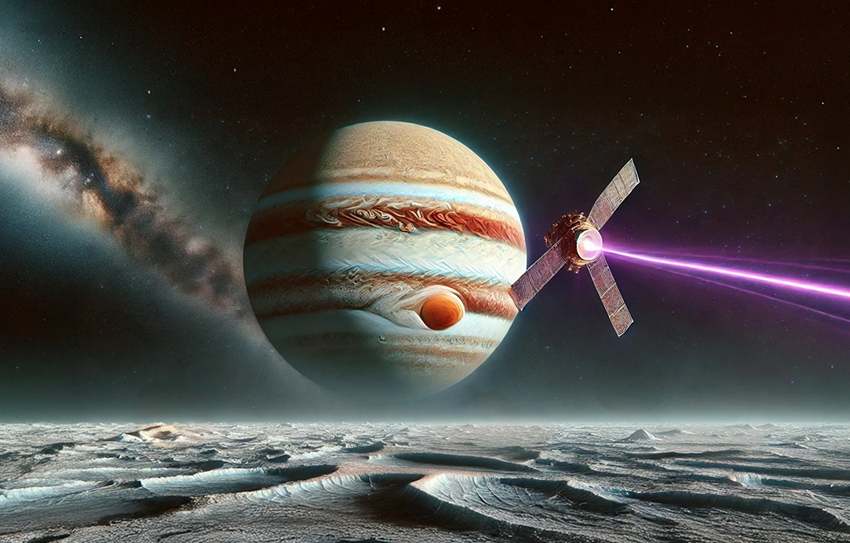

When exposed to UV light, these amino acids emit radiation at distinct wavelengths. Simulation of the Eureka spacecraft scanning Europa’s surface
(Illustration: Gidi Yoffe via ChatGPT)
Although amino acids are a clear signature of life, they can also form through non-biological processes. Discovering them on Europa would be a sensational finding — but not definitive proof of life. In fact, samples recently returned from an asteroid contained a wide variety of amino acids.
“Building blocks for life have been found on comets and asteroids,” Daniel said, “but if we find signs of life on Europa, it would mean these processes are happening now — not millions or billions of years ago when asteroids and comets formed. Discovering such signs would be a major breakthrough — something that any child or adult can relate to.”
11 View gallery
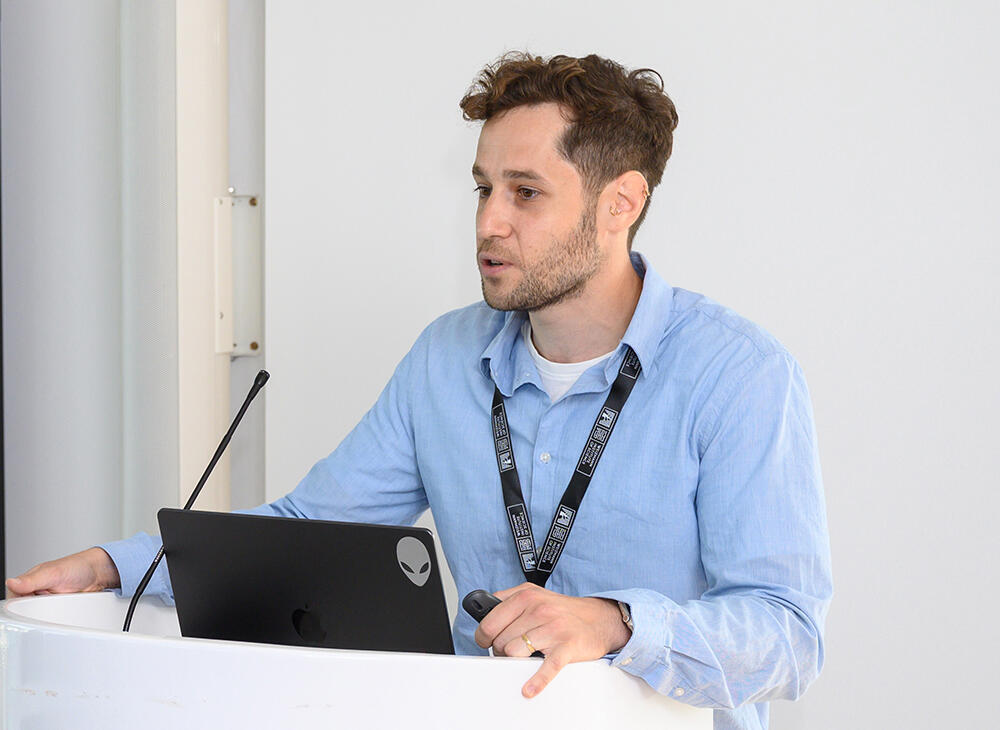

The most practical way to detect signs of life on Europa — at least until a spacecraft lands there. Gidi Yoffe presenting at the Weizmann Institute conference
(Photo: Ohad Herches, Weizmann Institute of Science)
“Our goal is to lay the first building block toward a mission that will find direct evidence of life,” Andrey added. “That would significantly advance our understanding of how life evolved on Earth — and how it may have evolved elsewhere.”
The current mission outline includes two possible trajectories. One option is for the spacecraft to enter orbit around Jupiter. During its passes near the planet, it would fly by Europa and scan pre-selected sites on its surface chosen as promising candidates that may harbor the amino acids scientists are hoping to detect. This orbit would need to be long and highly elliptical to minimize the spacecraft’s exposure to Jupiter’s intense radiation and powerful magnetic field. In this scenario, the spacecraft could complete three close flybys of Europa, with the possibility of extending the mission for additional flybys if all its instruments remain operational.
The second option is significantly more complex: the spacecraft would execute a single flyby of Europa without entering Jupiter’s orbit, using the planet’s gravity to slingshot toward Saturn. It would then pass Enceladus, Saturn’s geologically active moon, and use Saturn’s gravity to return to Jupiter for another flyby, potentially of Europa or another Jovian moon.
The choice of trajectory will depend in part on which international partners the mission organizers are able to recruit. These partners could contribute funding in exchange for the opportunity to add their own scientific payloads. The current spacecraft design can accommodate additional payloads weighing several dozen kilograms.
11 View gallery
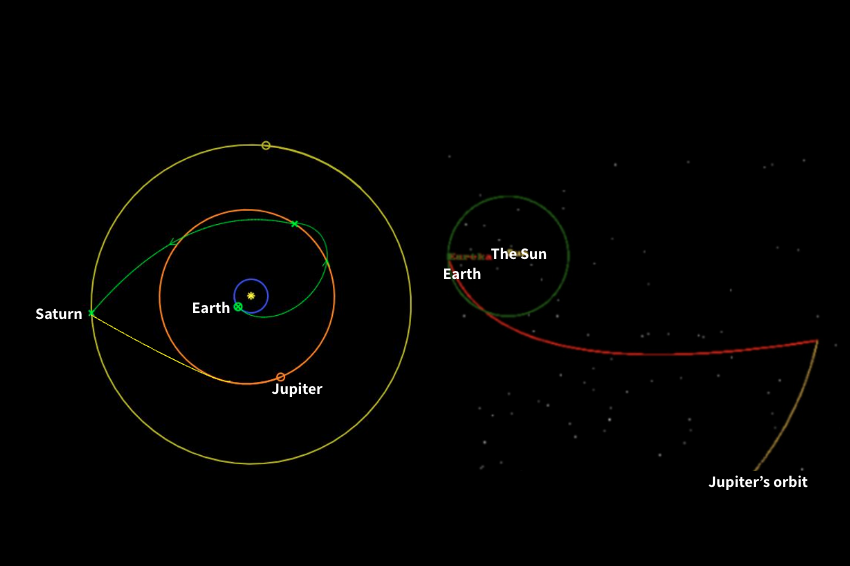

Two possible mission trajectories: entering orbit around Jupiter for three Europa flybys (right), or performing a single Europa flyby, continuing to Enceladus, and returning to Europa (left)
(Illustration: Israel Aerospace Industries)
“There are ongoing discussions with potential partners, and if political developments in the Middle East continue, it’s not unreasonable to hope that some could come from our region,” said Prof. Kaspi, referring to the major investments made in recent years by countries like the United Arab Emirates and Saudi Arabia in space programs. “There’s something thrilling about these kinds of missions. They generate tremendous interest.”
The mission’s initiators are also seeking collaborators within Israel, which is why many members of the local space community — from academia and industry — were invited to the recent conference at the Weizmann Institute. “It’s a form of collaboration with other industries in the country and helps position Israeli industry as a partner in deep space missions,” said Andrey. “If we discover a significant biological marker, it will spark global interest and place Israel at the forefront of space research. This isn’t just an engineering mission — it also involves biology, chemistry, and even philosophical aspects. It opens the door for many people to enter the field.”
The researchers also plan to use the spacecraft for additional scientific investigations, despite its limited instrumentation. These may include studying asteroids along the way to Jupiter, or after the primary mission is complete.
“This revives the field of planetary science, which flourished in Israel for decades before gradually fading,” Yoffe added. “The very fact that there is renewed, multidisciplinary interest in this area is incredibly exciting.”
11 View gallery
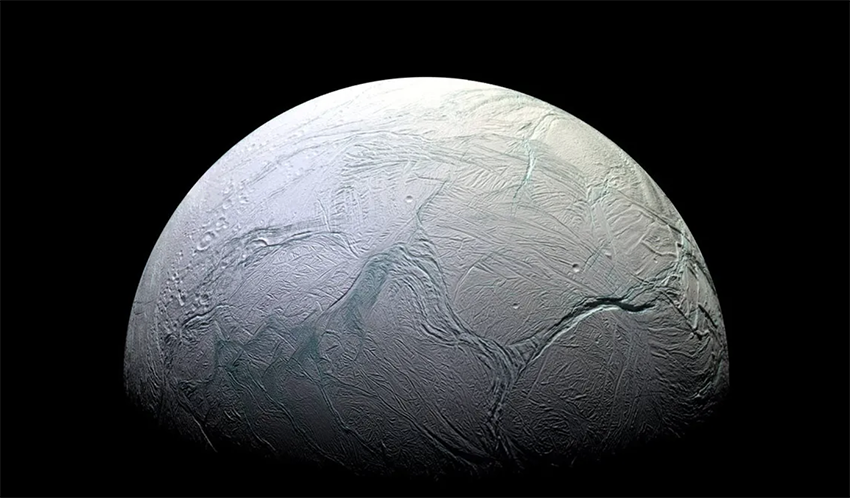

This mission could reinvigorate planetary science, a field that has diminished in Israeli research. Enceladus, Saturn’s intriguing moon, may become another destination after Europa
(Photo: NASA/JPL-Caltech)
Yoffe himself followed a unique path to this mission: he earned a master’s degree at the Weizmann Institute studying exoplanets using statistical tools, began a PhD in Germany, but returned to Israel for personal reasons. He completed his doctorate at the Hebrew University of Jerusalem, applying statistical tools and artificial intelligence to an entirely different field — biblical studies. Kaspi, who had known Yoffe from his time at Weizmann, brought him into the project.
“At first, I was hesitant to join this mission while pursuing a PhD in a different field, but it turned out to raise exactly the kinds of questions I wanted to explore,” Yoffe said. “After some deliberation, I joined part-time, and once I completed my PhD, I continued as Kaspi’s postdoctoral researcher. The search for life beyond Earth has fascinated me since childhood, and now I’m happy to contribute in such a unique way. I see this field as my professional future.”
Even with international partners, funding the mission will be no simple task. The planners estimate a total cost of around 150 million—not including launch expenses, which could add another 50 to $100 million depending on the spacecraft’s final size, mission trajectory, launch provider, and other factors. While this is a substantial sum, it is still remarkably low for such a challenging mission: comparable missions to Jupiter — and especially to Saturn — typically cost billions of dollars.
So how can a mission to Jupiter be launched at a fraction of the usual cost?
“Organizations like NASA and ESA are conservative by nature,” explains Prof. Kaspi. “They tend to reuse the same instruments with only minor changes.” As a result, their spacecraft often carry about ten large, expensive scientific instruments. “We can take a much more focused approach, with fewer and smaller instruments, which allows us to use a relatively small spacecraft.”
“We’re leveraging platforms originally designed for geostationary satellites and adapting them for deep space missions,” Andrey added, referring to the orbital paths used by many large communications satellites. “In addition, global trends are helping us reduce costs — including falling launch prices and significant improvements in the performance of solar cells for power generation.”
11 View gallery
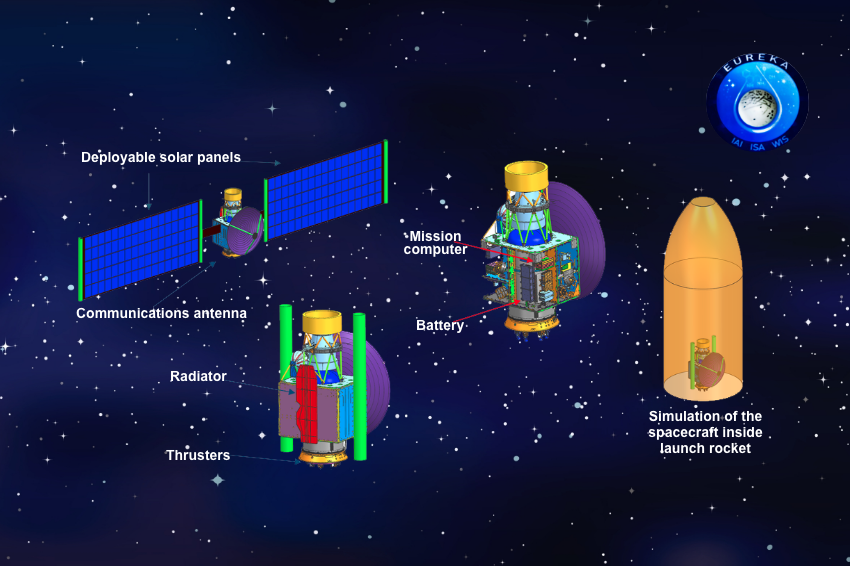

A relatively small spacecraft, based on an existing platform and carrying only a few instruments. Preliminary schematic design of the Eureka spacecraft
(Illustration: Israel Aerospace Industries)
Power generation is one of the mission’s biggest engineering challenges. Traditional deep-space missions have relied on radioisotope generators for energy production. But today, it’s increasingly difficult to acquire uranium and plutonium, and their high cost would drive the mission’s total price to astronomical levels. Other spacecraft currently en route to Jupiter also rely on solar power, “but if we continue onward to Enceladus, we would be the first in history to reach a distance of nine astronomical units (1.35 billion kilometers) using solar panels,” Andrey noted.
“We’re also using components originally developed for satellites designed to operate in space for 15 years,” Daniel added. “That’s more than sufficient for our mission, which involves only a few passes near Jupiter. So we can use proven components without needing to develop and test new parts from scratch. That helps reduce costs too.”
The mission’s telescope will also build on an existing instrument – the one currently being developed for the ULTRASAT space telescope. While some modifications and adaptations will be necessary, both missions require a telescope and camera that operate in the ultraviolet spectrum. Ideas and technologies developed for ULTRASAT will therefore help accelerate and support the development of Eureka’s scientific payload.
So far, all work on the project has been funded locally by the Weizmann Institute of Science and Israel Aerospace Industries, with support from partners who volunteered their time for preliminary research and planning. To move forward, the team will need to secure significantly more funding and establish a viable framework to finance the entire mission.
From the outset, the planners presented the mission to the Israel Space Agency (ISA). ISA Director Uri Oron, who also attended the conference at the Weizmann Institute, emphasized that funding such a mission poses a significant challenge. He made clear that the conference’s purpose was to outline the mission’s vision, not its financing. Nevertheless, he noted that the mission aligns closely with the agency’s goals: advancing Israel’s space activities and national interests in space, promoting science, and strengthening Israel’s international standing in the space arena.
“The agency welcomes the initiative and sees a strong connection between this mission and the objectives of the Israel Space Agency. We support the mission’s core idea and see it as a platform for international collaboration,” Oron told the Davidson Institute, three weeks and one war with Iran after the conference. “The agency will need to help fund feasibility studies and assist in identifying potential partners for the mission. There are several such possible partners, but we have not yet engaged in discussions with them.”
11 View gallery
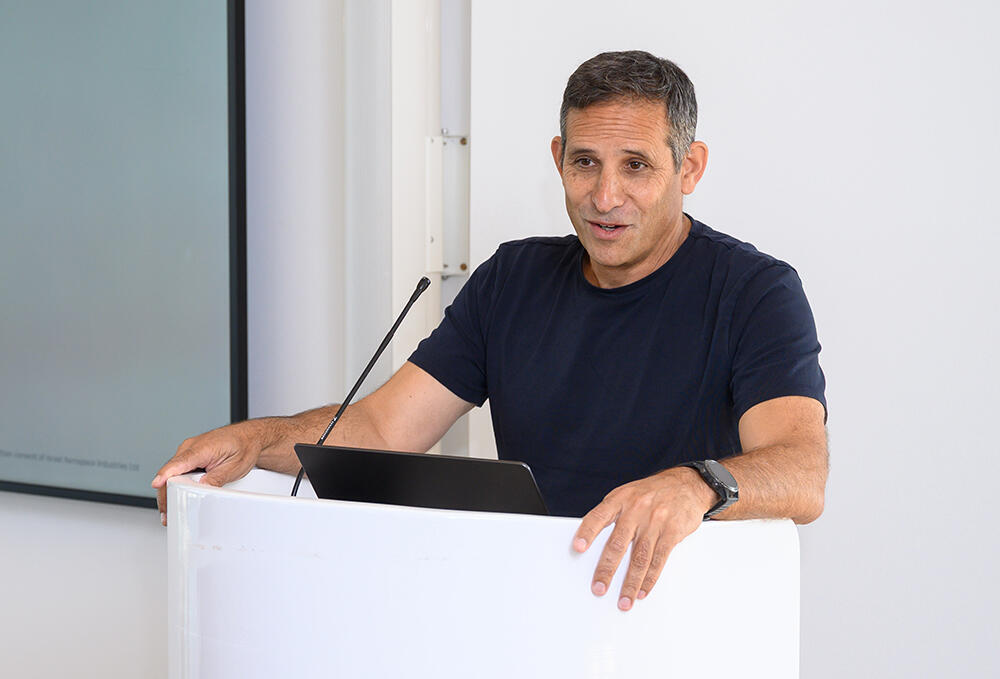

The mission aligns with all the Israel Space Agency’s goals — but securing funding will be challenging. ISA Director Uri Oron at the Weizmann Institute conference
(Photo: Ohad Herches, Weizmann Institute of Science)
Oron reiterated the mission’s value in inspiring curiosity and public imagination: “The question of whether we are alone in the universe is one of humanity’s greatest mysteries. Participating in a groundbreaking mission that might help answer it is something very few countries are doing. Even if the chances of finding an answer are slim, the fact that Israel is undertaking something so rare helps inspire people. That’s the story we need to tell at the national level.”
The project’s partners all emphasize the mission’s potential to elevate Israel’s international standing. “If we can contribute to the global effort on this question, we show that even a small country can play in this league,” said Andrey.
Prof. Kaspi concluded: “For the sake of groundbreaking science, you have to take big risks — and we’re not afraid of failure. In the worst case, even if the scientific mission doesn’t succeed or yields no conclusive results, we’ll know that Israel developed new capabilities, educated a generation of students, and fostered collaborations between academia and industry, as well as internationally. That in itself advances Israel’s space sector and scientific education. This mission will result in dozens of scientific papers, and even a negative result will have significance — we’ll be able to learn from it. The data collected will also help refine methods for searching for signs of life in other planetary systems. So the risk is not as big as it seems.”
Like any ambitious space mission, Eureka’s initiators have set themselves a challenging timeline. They hope to launch the spacecraft in the early 2030s — within about seven years.
“Jupiter has launch windows roughly once a year, and you can get there in about two years with a direct flight, though there are also slower trajectories,” said Andrey. “If we go for a combined mission to Europa and Enceladus, there’s a suitable launch window in 2032, and another a few years later. A Jupiter–Enceladus–Jupiter mission would take about seven years.”
The spacecraft’s trajectory will depend in part on the chosen launch configuration. The larger and heavier the spacecraft, the more powerful the rocket it will require. If a direct flight to Jupiter is desired, the rocket must also carry enough fuel to place the spacecraft on that faster path.
“Launch selection is a very important point, but we’re not there yet,” emphasized Daniel. “There are relevant launch providers, and we’re in contact with some of them, but it’s still too early to go into detail. The main challenge right now is securing the budget.”
The initiative for the Europa mission began to take shape during conversations between engineers at Israel Aerospace Industries and researchers at the Weizmann Institute of Science in the summer of 2023. But soon after, the October 7 massacre occurred, and work on the mission was put on hold — especially as many of those involved were called up for extended military reserve duty. Only in the summer of 2024 did the teams reconvene: at Israel Aerospace Industries, the focus turned to engineering design, while Weizmann Institute teams concentrated on the mission’s biological and geological aspects and on the development of scientific instruments.
The conference held on June 11 summarized roughly a year of work on the mission, carried out with self-funding from both Israel Aerospace Industries and the Weizmann Institute and progressed “on the back burner” alongside other projects. As mentioned, three days after the conference, the Weizmann Institute was struck by Iranian missiles, and one of the buildings destroyed was the one where Kaspi and Yoffe work.
11 View gallery
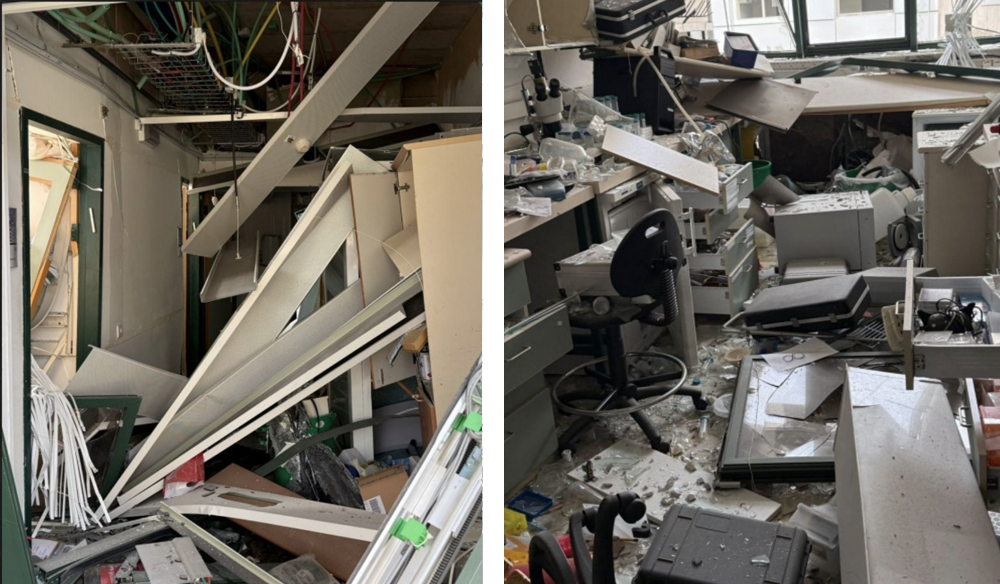

After major crises, we move forward and forge new paths. Destruction in the Zussman Building at the Weizmann Institute, where Kaspi and Yoffe work, following the Iranian missile strike
(Photo: Weizmann Institute of Science)
This reality — working on a space mission that reaches farther than ever while simultaneously contending with war, terror, reserve duty, and missile attacks — could likely happen only in Israel. For the project’s partners, it only adds to the motivation. “It seems the Jewish people have always stood on two legs — one of extraordinary creativity and ingenuity, and the other of resilience in the face of extraordinary hardship,” says Yoffe, who studied biblical texts for his PhD. “In this sense, a space mission advancing despite the events we have been through is a small but symbolic part of the Jewish legacy, which is being written with renewed intensity these days.”
“There’s a message here that we continue moving forward even in the face of hardship, and that Israeli progress and our breakthroughs cannot be stopped,” Daniel added. “We are driving innovation not only in matters of security, but also in fundamental scientific questions, such as the question of the origin of life.”
“After every major crisis, there always comes a time to break into new and unimaginable directions,” Kaspi concluded. “The institute was damaged, but what we have here is far stronger than any missile or destroyed lab. This is science’s positive answer to destruction: to come together with partners from the region, to look ahead, and to search for life — not death.”
